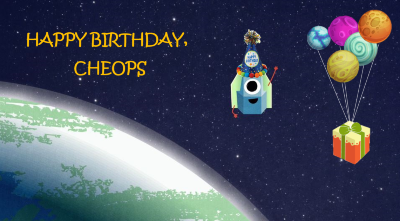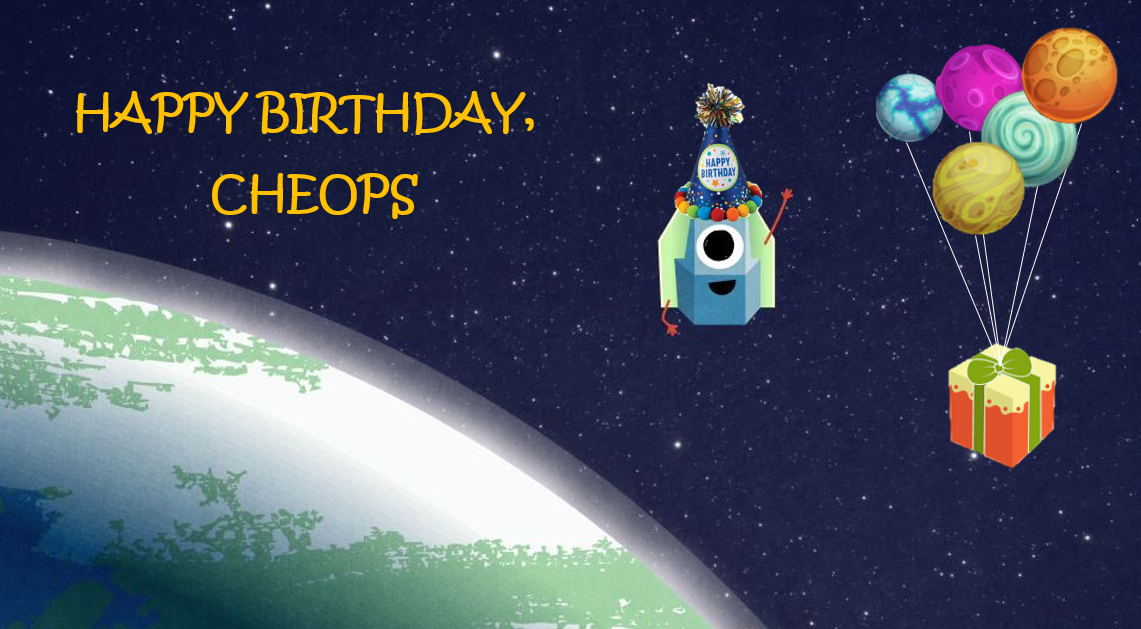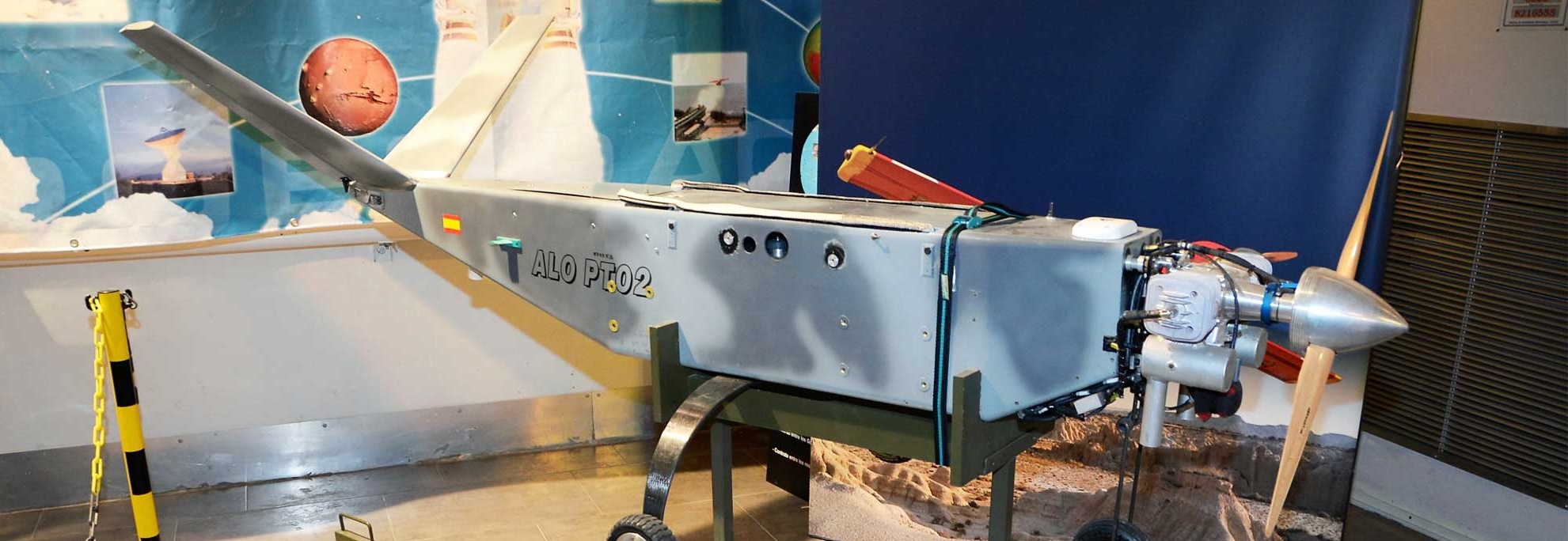- 12/18/23, 11:02 AM
- CHEOPS MOC Team

Today, December 18th, 2023, we celebrate four years since ESA´s scientific satellite, CHEOPS, was launched to orbit. From that point on, its control and operations began at CEIT’s mission operations center (MOC), from where we write to you today.
CHEOPS arrived at its initial orbit at approximately 12:20 pm and a little while later, it was detected by ESA´s polar ground stations. This moment was the kickoff for the LEOP (Launch and Early Orbit Phase), which happened to be performed outside of ESA’s operations center located in Darmstadt!
During this phase, which lasted five days, the initial checks of the satellite were performed and the first maneuvers executed in order to position the satellite in its nominal orbit, sun synchronous at a height of 700 km.
The end of the LEOP gave way to the IOC (In-Orbit Commissioning) phase where the telescope cover was opened and the first images were taken. Only a few days after the beginning of the nominal mission, the COVID confinement arrived and with it, the first operations from home. Not only did this corroborate the great capability of the control center´s automation, but also thrusted the automation of activities beyond the initial requirements. This phase was successfully passed and on April 18th, 2020 the satellite was pronounced operational.
A few uneventful months passed before receiving an unexpected mail: the collision probability with a space debris exceed the established risk threshold! The first evasive maneuver was executed on October 2nd, 2020 and four years later, eleven warnings have been received and a total of three maneuvers have been executed.
CHEOPS has also given us many great moments throughout these years. Some months ago, we received the exciting news that the CHEOPS team had been praised by ESA for its dedication and notable accomplishments and were given the honor to attend the ESA Team Achievement Award Ceremony 2020 at ESTEC to accept the well-deserved award.
Furthermore, this year in June, we had the opportunity to meet up in person, after a very long wait, with the whole CHEOPS team at the INTA facilities to have the IOPR (In-Orbit Performance Review) and Lessons Learnt, in which all elements of the mission were deemed to be in a perfect state.
At the scientific level, CHEOPS has surpassed its expectations during the nominal mission, not only for its contribution to the characterization of the already known exoplanets, but for the discovery of new ones as well, something which was not originally contemplated. CHEOPS has paved the way for the observation of other planets that will continue to be in the spotlight for future ESA and NASA missions, such as Plato, Ariel and James Webb telescope. Here are some of CHEOPS’ scientific milestones:
- Detection, for the first time, of a deformed exoplanet with a rugby-ball shape. This planet orbits so close to its star, completing a revolution in one day, that the tidal forces have deformed it into its distinctive shape.
- Contribution to the discovery of a dense ring around the dwarf planet, Quaoar, in our solar system. The great distance between the planet and its ring has challenged the Roche limit’s theory, according to which the particles of the ring should have assembled and created a satellite.
- Discovery of an ultra-hot exoplanet covered by metallic clouds that reflect 80% of the incoming light, making it the shiniest planet known to date. These clouds are so heavy and reflective that they allow the planet to keep its atmosphere, contrary to what was thought for planets so close to its star where the atmosphere disappears due to the extremely high temperatures.
- Involvement in the discovery of a family of exoplanets orbiting in resonance. This means that the orbital periods can be expressed as a ratio of whole numbers, for example, when a planet orbits its star in two days, other planets take three days. Of the three-star systems with six planets in resonance, CHEOPS has contributed to the discovery of two of them.
CHEOPS’ operational lifetime has expired, but this does not mean that the mission is finished. As you have probably read in previous blog entries, the mission has been extended for 3 more years, with the possibility of future extensions. At MOC, we have already started orbit correction maneuvers for the mission extension, with the objective of maintaining the sun-synchronous orbit for the following years. We will talk about this in more detail in a following blog entry.
blog.









